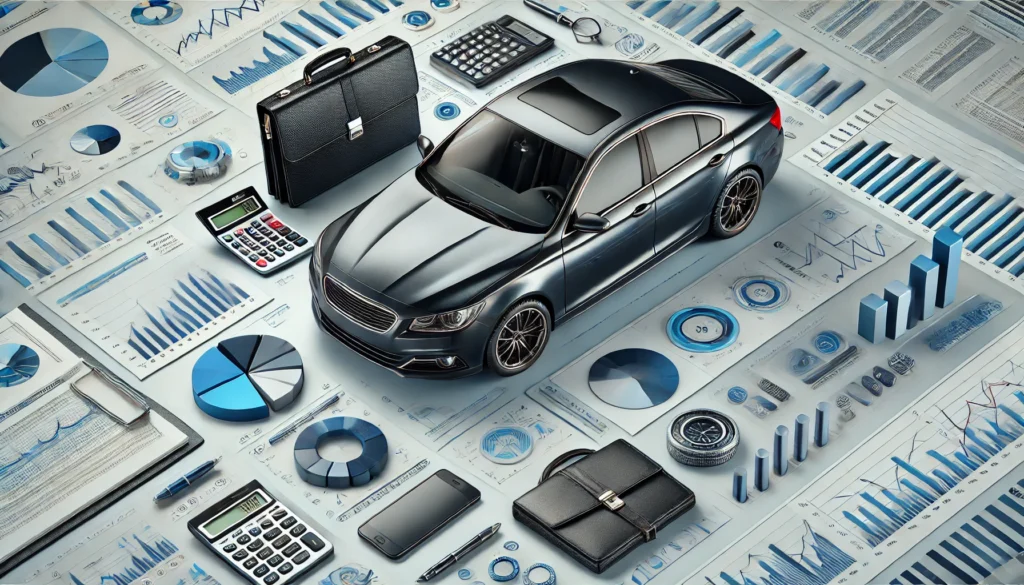Buying a car is a significant decision for many individuals and companies, requiring careful consideration of all financing options. In this article, we will look at various ways of financing a car in Slovakia and analyze their advantages and disadvantages from legal, tax-accounting, and economic perspectives.
Direct Cash Purchase
Direct cash purchase of a car represents one of the simplest forms of vehicle acquisition. From a legal standpoint, the advantage is that car ownership immediately transfers to the buyer, which eliminates risks associated with leasing or loans.
From a tax-accounting perspective, this option provides full control over the asset, allowing for simple bookkeeping and tax depreciation according to current regulations.
The economic aspect of this financing method emphasizes the absence of interest and fees, which reduces the total cost of acquiring the vehicle.
However, the disadvantage is the need for a large one-time investment, which may be risky for you if financial resources are needed elsewhere. Also, the high initial value of the asset can affect the company’s financial indicators, and tying up a large amount of capital can limit the company’s liquidity.
Operational Leasing
Operational leasing is suitable for those who don’t want to own a vehicle but rather use it. From a legal perspective, the vehicle remains the property of the leasing company, which means that risks associated with car ownership are minimized for the lessee.
The tax-accounting aspect of operational leasing brings the advantage of tax-deductible monthly payments, which can reduce the tax base. Economically, this type of leasing is attractive due to lower initial costs and the possibility of regularly renewing the vehicle after the lease ends, ensuring an always up-to-date fleet.
Many leasing companies offer a wide range of services including vehicle servicing, tire changes, insurance, and others, which can save companies the hassle of vehicle maintenance. The disadvantage is limited control over the vehicle since it’s not owned by the lessee. Total costs may be higher due to fees for services and associated comfort.
Financial Leasing
Financial leasing is suitable for those who plan to eventually purchase the vehicle. The legal aspect of this type of leasing is that while the vehicle is owned by the leasing company during the lease period, it transfers to the lessee’s ownership after the lease agreement expires.
From a tax-accounting perspective, financial leasing allows for vehicle depreciation. The car is classified as an asset upon purchase, and since it belongs to the 1st depreciation group, it is depreciated over four years, meaning the tax-deductible expense is 25% of the car’s price annually (with straight-line depreciation). Depreciation and interest from payments are tax-deductible expenses, which can be advantageous for companies.
Economically, this type of leasing means lower initial costs compared to direct purchase; initially, only a down payment (first installment of the purchase price) is required, which usually ranges from 10% to 60%. The installment includes repayment of principal, interest, VAT, and insurance if this insurance is contractually agreed as part of regular payments (e.g., mandatory contractual insurance, comprehensive insurance, or various additional insurances).
After repaying the lease, the entrepreneur becomes the owner of the vehicle by paying the redemption value, which is usually symbolic (e.g., 100 EUR). The disadvantage is that the vehicle may be subject to a lien during the lease period, which limits the freedom to sell it.
Car Loan
A car loan provides the possibility of immediate vehicle ownership, with the buyer becoming its owner immediately. From a legal perspective, the main advantage is vehicle ownership, which means full control over its use, although the possibility of selling may be contractually limited due to loan security.
The tax-accounting aspect allows for vehicle depreciation. The car is classified as an asset upon purchase, and since it also belongs to the 1st depreciation group, it is depreciated over four years, meaning the tax-deductible expense is simplified to 25% of the car’s price annually (with straight-line depreciation). Also, interest from loan installments can be tax-deductible expenses, which can be advantageous for companies.
Economically, a loan means a lower initial investment compared to direct cash purchase, while gradual repayment can be better adapted to the buyer’s financial capabilities. The disadvantage is that the vehicle may be subject to a lien, which limits the freedom to sell it. The financing institution also often conditions the loan provision on concluding insurance to cover its risks, with the required insurances typically being MTPL and comprehensive vehicle insurance.
Comparison Table
| Criterion | Direct Purchase | Operational Leasing | Financial Leasing | Car Loan |
|---|---|---|---|---|
| Ownership | Immediate | Remains with leasing company | After lease completion | Immediate |
| Initial costs | High | Low | Medium (down payment) | Medium |
| Tax benefits | Depreciation | Payments | Depreciation and interest | Depreciation and interest |
| Flexibility | High | Low | Medium | Medium |
Conclusion
Choosing the appropriate method of car financing depends on the individual needs and financial capabilities of the buyer. Direct cash purchase is advantageous for those who have sufficient capital and want to avoid additional costs. Operational leasing is attractive for those who prefer lower initial costs and regular vehicle renewal, while financial leasing and car loans represent a compromise between equity and long-term financing. It is important for every interested party to carefully consider all aspects, including legal, tax-accounting, and economic impacts, to decide on the most suitable financing method.
If you have further questions or need advice, don’t hesitate to contact us at [email protected]. We are here to help you make the best financial decision for your future.



